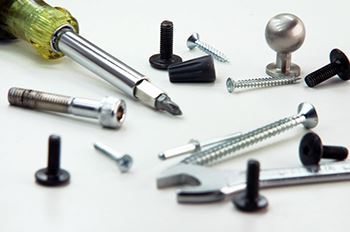Bolt connection: bolt and nut are used to fasten and connect two components with through holes, belonging to detachable connection.
According to the matching degree of screw and through hole, the bolt connection type can be divided into two types.
Ordinary bolt connection: after assembly, there is a gap between the hole and the rod, the structure is simple, the assembly and disassembly is convenient, and it can be assembled and disassembled for many times, so it is widely used( The hole is 1.5mm-1mm larger than the screw.
Reamed hole bolt connection: no gap after assembly, mainly bearing transverse load, can also be used for positioning( The hole is 0.3mm-0.5mm larger than the screw.
Working principle of bolt connection:
Hooke's Law: after a solid material is stressed, there is a linear relationship between the stress and strain (unit deformation)
Stress analysis of bolt connection:
Bolt shear connection: mainly rely on bolt rod and hole wall mutual extrusion force transmission.
Bolt tensile connection: mainly depends on the pre tightening force after the bolt is tightened.
When the stiffness of the connected member is large and the bolts are symmetrically arranged, each bolt will bear the average tensile force at the joint; When the stiffness of the connected member is small, the flange at the connection will be bent and deformed, resulting in lever force.
In addition to shear force and tensile force, it is also subject to vibration, temperature, lateral stress (wind, flow, pressure, etc.), load change and other forces.

Link to this article:Do You Know The Principle Of Bolt Connection
Reprint Statement: If there are no special instructions, all articles on this site are original. Please indicate the source for reprinting:Mold Wiki,Thanks!^^
